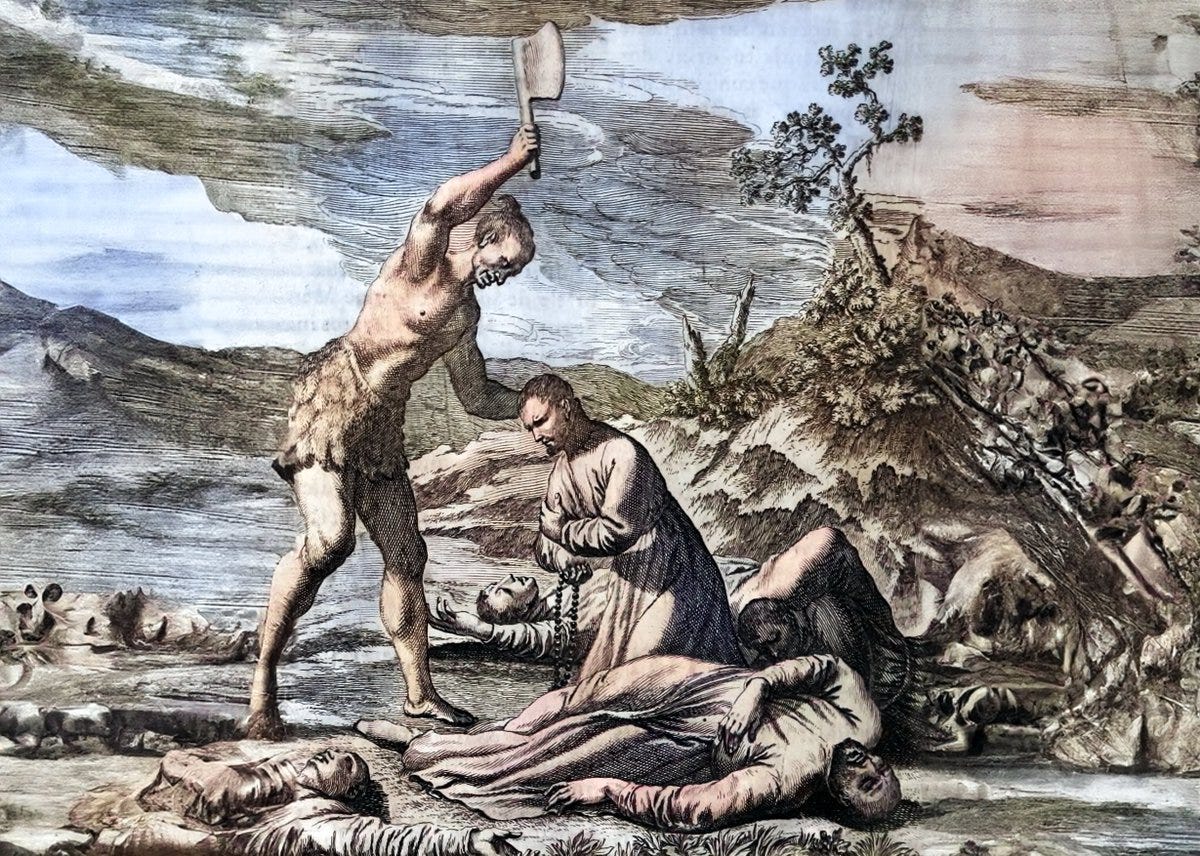The Lost Prince of Virginia
It began with a ship on the horizon, as so many stories of the New World did. The year was 1561, and the vessel, a Spanish caravel, bore the name Santa Catalina. She moved through the waters where the James River met the Chesapeake Bay, her sails swelling with the Atlantic winds, her crew scanning the unfamiliar shoreline for signs of life. When they found it—two men, Virginia Indians standing at the water’s edge—what transpired next would be debated for centuries.
Did force take these men, or did they step aboard willingly, drawn by the promise of a world beyond their own? What is certain is that they departed. One of them was named Paquiquineo, and this was only the beginning of his fascinating journey.
Across the ocean, the Santa Catalina carried him to Spain, to Seville, where the weight of empire was everywhere: in the gold pouring from the Americas, in the churches filled with incense and conquest, in the very stones of the city. From Seville, he traveled south to Cádiz, where in May of 1562, he boarded another ship, this one bound for the Spanish territories in the Americas under the command of Pedro Menéndez de Avilés. His final destination: home. Or so he believed.

By August 10, the ship reached the port of San Juan de Ulúa in New Spain—present-day Mexico. But fate, that relentless navigator, had other plans. In the high-altitude capital of Mexico City, Paquiquineo fell gravely ill. The Spaniards, seizing upon the moment, baptized him, renaming him Don Luís de Velasco after the viceroy of New Spain. From that moment on, he carried two names, one from the world he had left behind, the other from the empire that had claimed him.
Even as he recovered, debates over his future played out in the halls of power. The Dominican Friar Pedro de la Feria urged King Philip II to keep Don Luís in Mexico and use him for a missionary expedition to his homeland. Across the Atlantic, Pedro Menéndez de Avilés, now governor of La Florida, saw another opportunity—one that aligned with Spain’s ambitions of planting a lasting foothold in the Chesapeake. King Philip II agreed.
In August 1566, Don Luís set sail aboard La Trinidad, but storms forced them far south of their destination. They landed instead in present-day North Carolina, claimed the territory for Spain, and then turned back. On October 23, La Trinidad limped into Cádiz. The Chesapeake would have to wait.
Four more years passed before Spain made another attempt. In the summer of 1570, Jesuit priests prepared for a new mission, this time with Don Luís as their guide. Father Juan Baptista de Segura led them, a man who believed, unlike the Spanish governors before him, that peaceful conversion, not military conquest, would bring Christianity to the people of the Chesapeake. Setting sail from Havana, he and his missionaries arrived at last on September 10, establishing a small settlement near the mouth of the bay.
At first, all seemed to go well. The priests wrote letters home, reporting on their progress. They built their mission, Ajacán, and trusted in their faith. But Don Luís had been gone for nearly a decade. He had seen the world beyond the bay and had returned not as a disciple of Spain but as something else entirely. He soon abandoned the Jesuits, disappearing into the forests to rejoin his people.
Then, on February 4, 1571, it happened. Three Jesuits traveled to Don Luís’s village to speak with him. They were never seen again. Soon after, Don Luís and his warriors descended on the mission itself. The attack was swift and merciless. Father Juan Baptista de Segura, the man who had hoped to bring peace, was among those struck down. In the end, all but one—a young altar boy named Alonso de Olmos—were killed.
When Spanish resupply ships arrived in the spring, they found only silence. A skirmish ensued. Two Indians were taken prisoner, and they confirmed the worst: the mission had been wiped out, the attack ordered by Don Luís himself.
Spain, unwilling to let the affront go unanswered, responded with force. In August 1572, a military expedition entered the James River, searching for Alonso de Olmos and seeking vengeance on Don Luís.
The Spanish hanged several Indians but never found Don Luís. He had disappeared, but his legend endured. The boy was found alive, but Don Luís had vanished. Whether he fled into the forests, took a new name, or melted back into his people, no Spaniard ever saw him again. In the following years, whispers from the Jamestown settlers told of an aging warrior who spoke of Spain, a man known as Opechancanough. Could they have been the same person? Some historians have wondered.
In need of a villain, Spanish chroniclers cast Don Luís as a traitor who had accepted their gifts only to betray them in blood. But the truth may have been more complicated. One modern scholar suggests that his actions were not treachery but a response to the violation of indigenous gift exchange traditions. The Spanish did not understand the economy of obligation and reciprocity that bound these communities together, and Don Luís (Paquiquineo) may have been restoring balance in the only way his world allowed.
If so, Don Luís did not vanish—he merely waited. And when the time came, he rose again, not as a man torn between two worlds, but as a leader who understood both, shaping history with the same quiet resolve that had carried him across oceans and back again.

BIBLIOGRAPHY
Wolfe, Brendan. "Don Luís de Velasco / Paquiquineo (fl. 1561–1571)" Encyclopedia Virginia. Virginia Humanities, (07 Dec. 2020).




